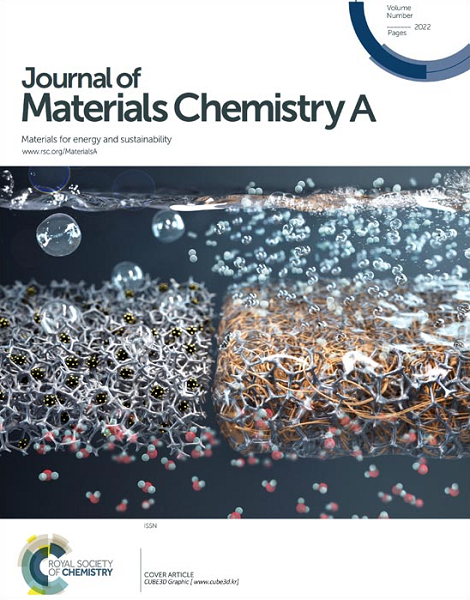Electrodeposition of oxyanion films as universal chloride ions-repelling layers for efficient and stable seawater oxidation at ampere-level current density
IF 10.7
2区 材料科学
Q1 CHEMISTRY, PHYSICAL
引用次数: 0
Abstract
Seawater splitting is an environmentally friendly pathway for hydrogen production, helping to resolve the conflict between the growing hydrogen energy demand and freshwater scarcity. However, abundant chloride ions in seawater cause chlorine oxidation reactions (ClOR), leading to severe anode corrosion and increased energy consumption. We developed an oxyanion film electrodeposition strategy to form a universal Clˉ-repelling layer onto electrocatalyst surfaces, allowing efficient and stable seawater oxidation at high current densities. Among several oxyanion films (sulfate, phosphate and carbonate), the Ni-Co layered double hydroxides catalyst with sulfate modification (NiCo-LDH@Sulfate) demonstrated the best seawater oxidation activity and stability (1 A cm-2 with 381 mV overpotential; stable activity at 600 mA cm-2 for 330 hours). In-depth explorations indicate that the high electrostatic potential generated by the oxyanion films can effectively repel Clˉ and inhabit ClOR. The oxyanion films can also improve oxygen evolution reaction (OER) activity by accelerating the generation of the OER active centers and changing the coordination intensity between the catalytic centers and the OER intermediates. Impressively, this strategy enables ultrafast formation of protective layer within 5 min and can be applied to a wide range of OER array electrodes, thus providing groundbreaking guidance for the industrialization of seawater splitting.求助全文
约1分钟内获得全文
求助全文
来源期刊

Journal of Materials Chemistry A
CHEMISTRY, PHYSICAL-ENERGY & FUELS
CiteScore
19.50
自引率
5.00%
发文量
1892
审稿时长
1.5 months
期刊介绍:
The Journal of Materials Chemistry A, B & C covers a wide range of high-quality studies in the field of materials chemistry, with each section focusing on specific applications of the materials studied. Journal of Materials Chemistry A emphasizes applications in energy and sustainability, including topics such as artificial photosynthesis, batteries, and fuel cells. Journal of Materials Chemistry B focuses on applications in biology and medicine, while Journal of Materials Chemistry C covers applications in optical, magnetic, and electronic devices. Example topic areas within the scope of Journal of Materials Chemistry A include catalysis, green/sustainable materials, sensors, and water treatment, among others.
 求助内容:
求助内容: 应助结果提醒方式:
应助结果提醒方式:


